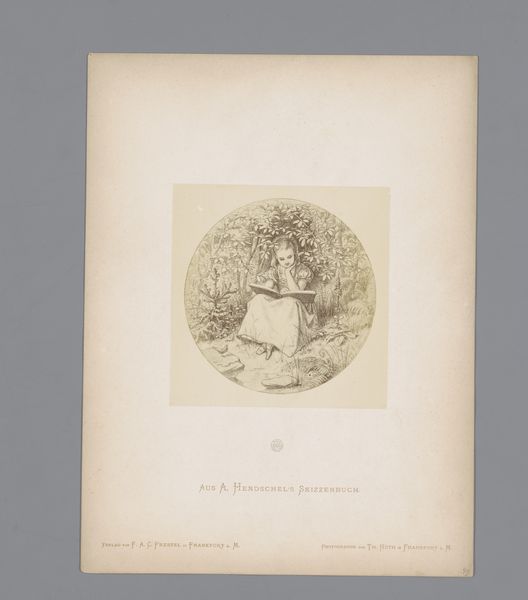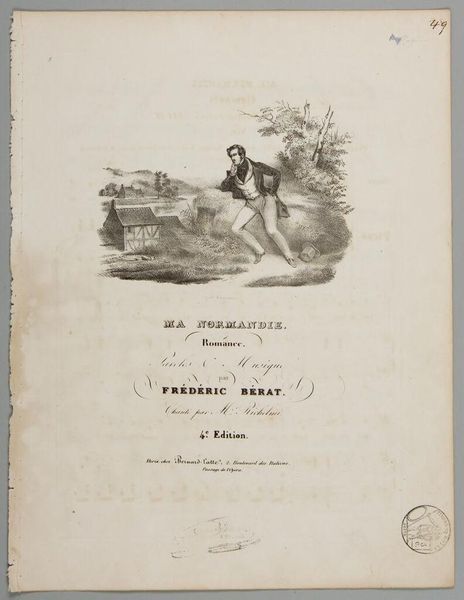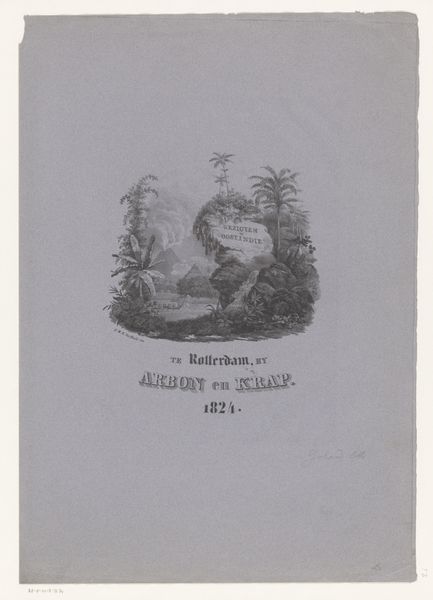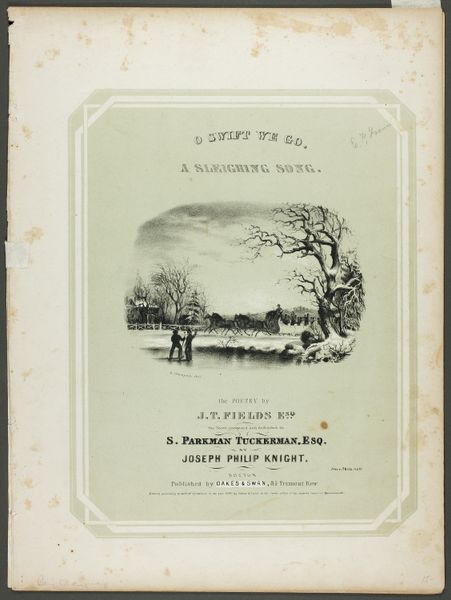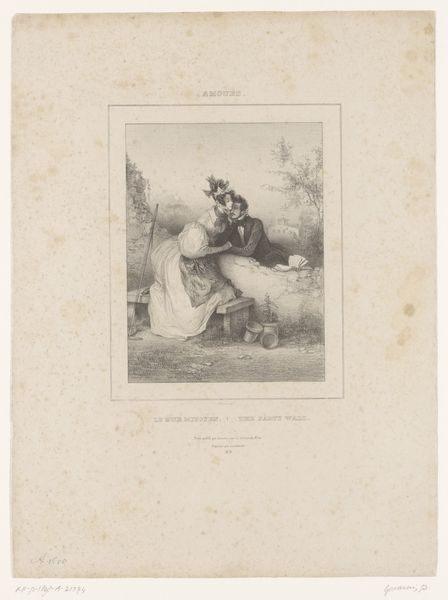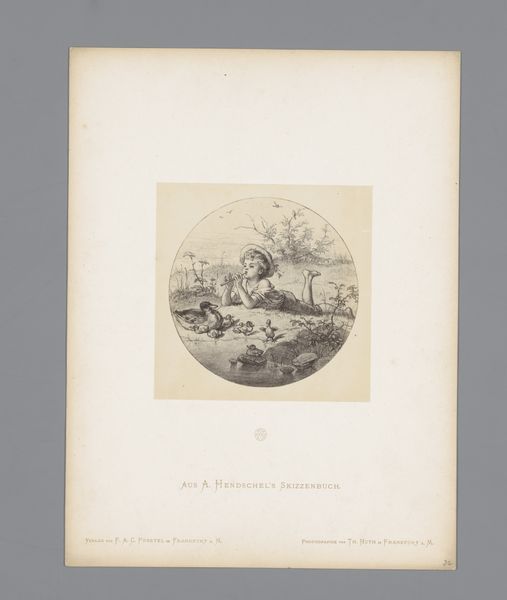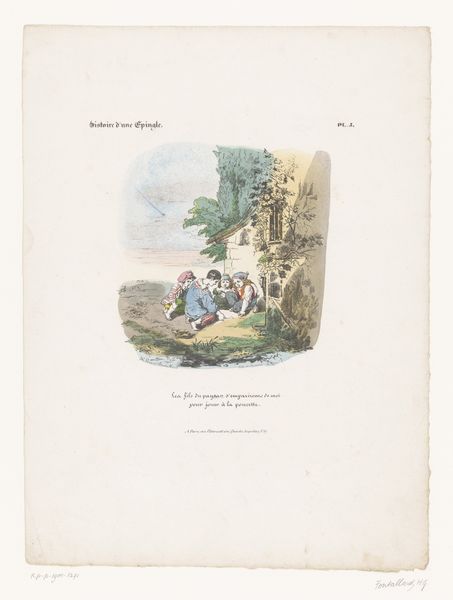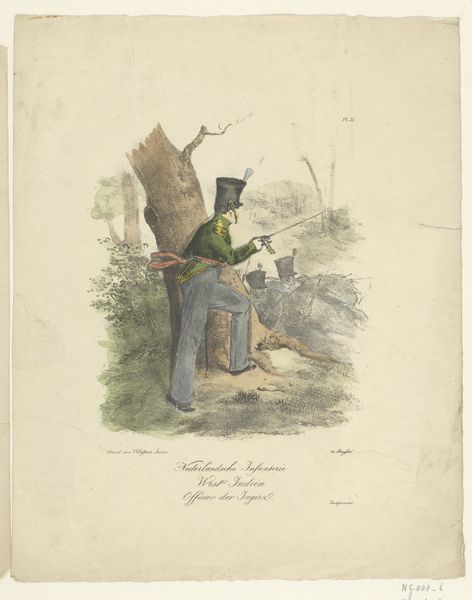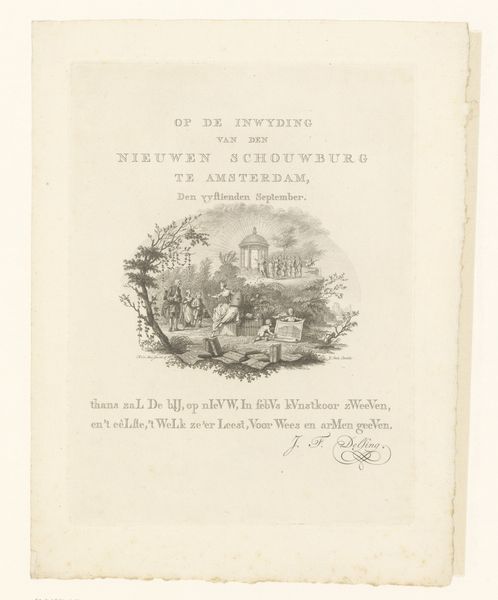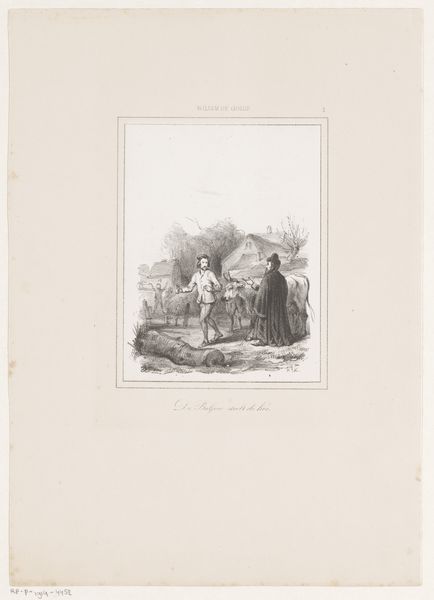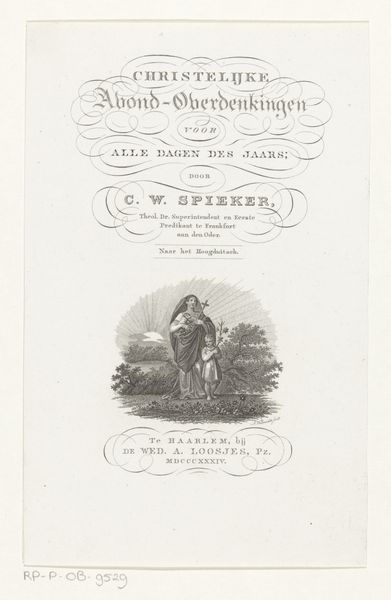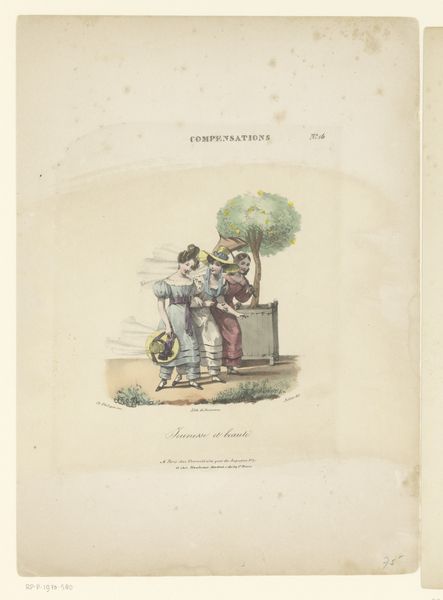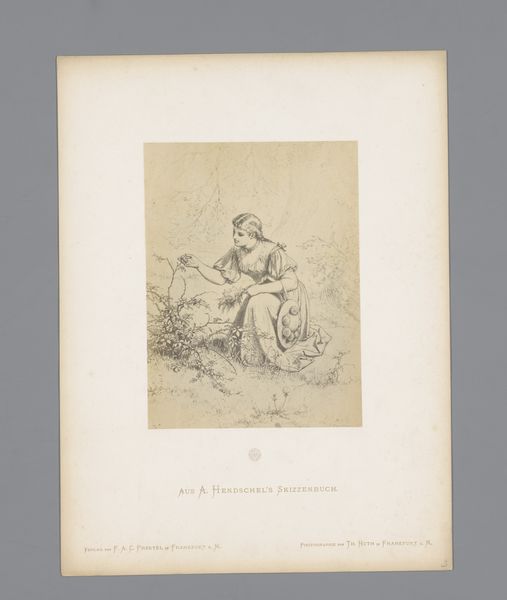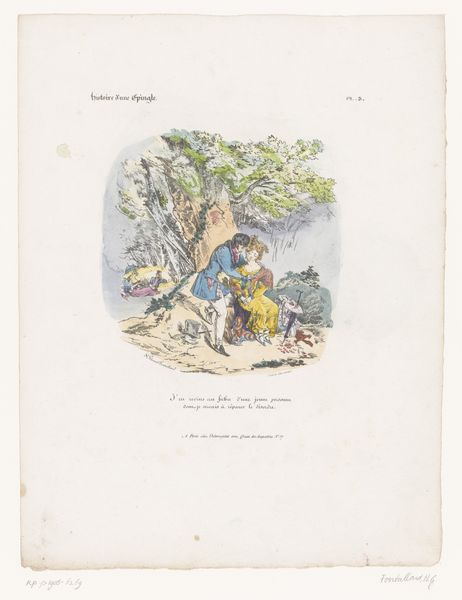
drawing, print, pencil
#
portrait
#
drawing
# print
#
landscape
#
romanticism
#
pencil
Dimensions: height 336 mm, width 258 mm
Copyright: Rijks Museum: Open Domain
Editor: This is Paul Gavarni's "Titelprent voor: Julie van Burgmüller," a drawing and print made in 1839. The figure is relaxing under a tree, but I find the overall image a bit unsettling. How do you interpret this work? Curator: This seemingly serene image needs to be interrogated. Consider the Romantic era's obsession with the individual and nature. How complicit was Romanticism in masking the burgeoning inequalities of the time? Editor: I'm not sure I follow... inequalities? Curator: Look closer. Who is Julie? A muse? A product? This title page, presumably for sheet music, positions her within a market economy. Does the idyllic setting serve to distract from the realities of female artistic labour and the restrictive roles imposed on women within the domestic sphere and artistic production? Who benefitted, and who was exploited, during this era of supposed artistic freedom? Editor: So you're saying it's not just a pretty picture of a woman in nature, but a commentary on her social and economic position? Curator: Exactly. By acknowledging the artifice and the power structures at play, we can engage with Romanticism beyond a superficial appreciation of beauty. Think about it in the context of class and gender - those always intersect in meaningful ways! Editor: I hadn't considered that angle before. It gives a whole new layer of meaning to the image. Curator: Precisely! Now, what other elements catch your eye? Remember, every detail contributes to the overall narrative and power dynamic. Editor: Thanks, that’s really given me something to think about!
Comments
No comments
Be the first to comment and join the conversation on the ultimate creative platform.
